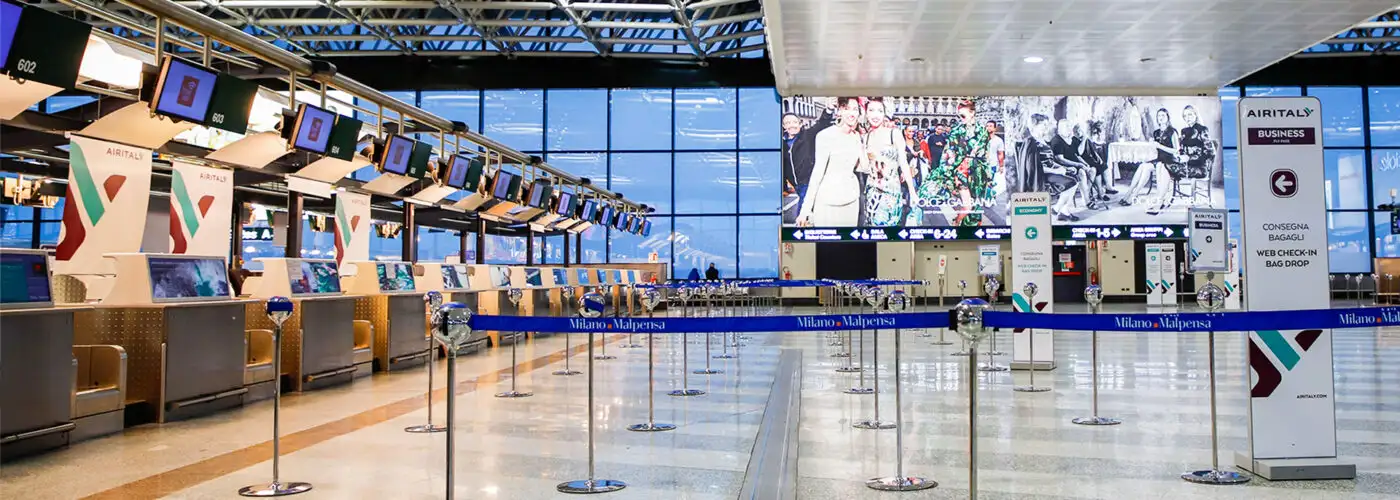How much of a hit has air travel taken during the COVID-19 pandemic? The short answer: Like nothing anyone has seen before. Even airline experts with long memories can’t remember a comparable impact of some critical event. Yes, 9/11 stopped air travel cold, but the immediate effect lasted weeks, not months. And the nation had a visible system in place—TSA screening—squarely aimed at preventing similar events in the future.
And while statistics vary depending on source and assumptions, public data makes clear that U.S. airline passengers are down about 90 percent for this time of year. International passengers are down at least as much, and domestic air travel in many parts of the world is also down, or shut off completely. Rewards site Upgraded Points recently put those staggering numbers into visuals, which offer a holistic view of the situation thus far.
Here’s what stands out in terms of the about-face COVID-19 has forced upon travel, and data visuals by Upgraded Points that illustrate them.
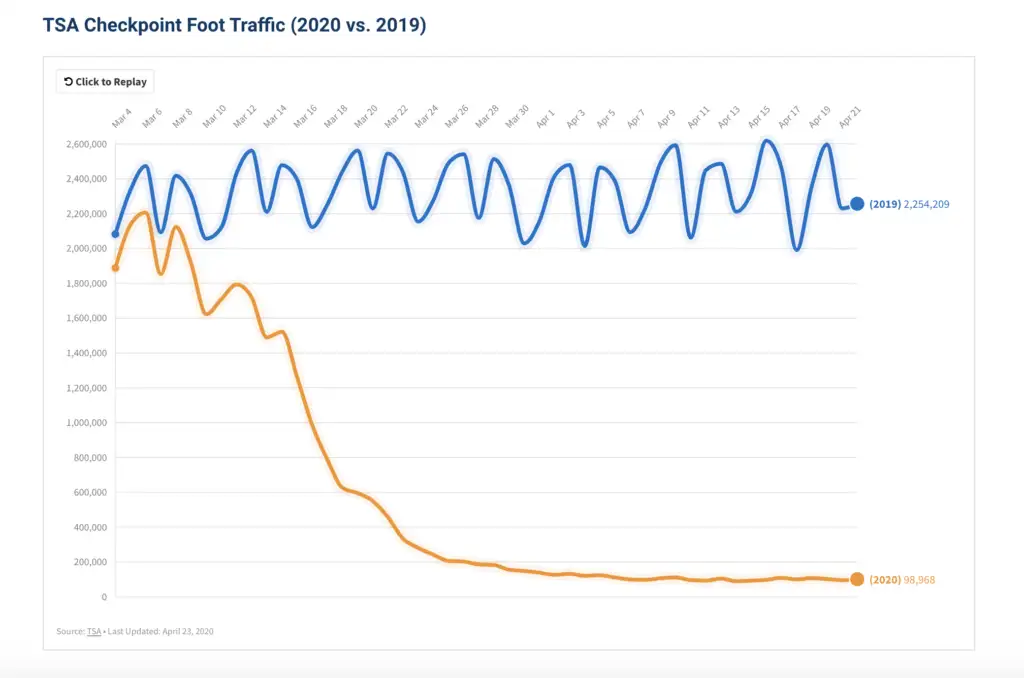
While very few people are flying (which we’ll refer to as foot traffic), air traffic is higher. As of late-April, about half of all U.S. domestic flights are regularly being canceled despite a 90 percent drop in foot traffic.
The discrepancy between foot traffic and flights is explained by one simple fact: The recent U.S. stimulus bill that offered rescue funds for airports and airlines requires that U.S. airlines continue serving the points they usually serve—which they are doing, by flying virtually empty planes.
Similar effects are seen in Asia and Europe, where foot traffic is down at least 75 percent and many airlines are not required to continue service.
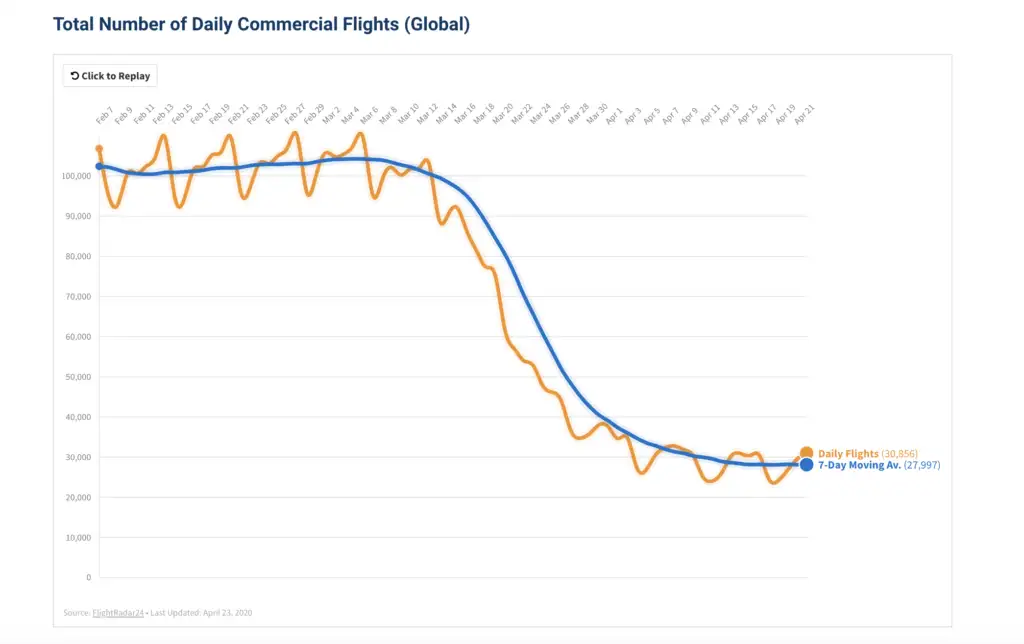
For example, Porter Airlines has suspended all flights, as has RyanAir and Royal Air Maroc. More carriers have suspended all international service, including South African Airways, Turkish, Avianca, and Qantas. The number of daily commercial flights flown globally has decreased by 76.5 percent.
Airlines are having a tough time finding places to park their idle aircraft. As an odd consequence, Southwest is, for now, the world’s largest airline in terms of seats flown per day.
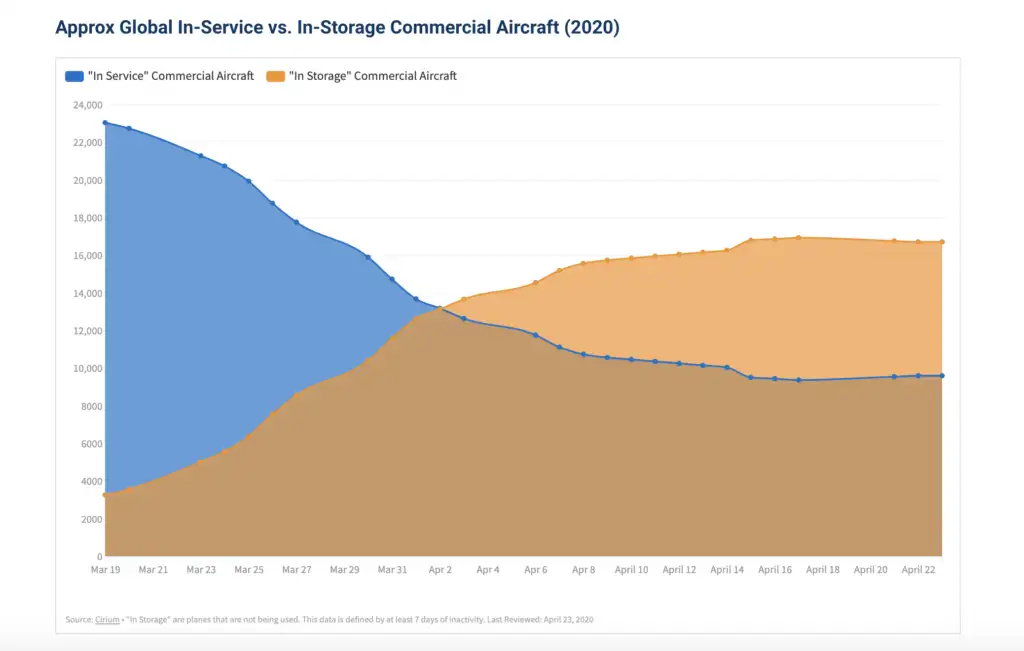
Airports are taking a similar hit, and with a drastic reduction in passengers comes a drastic reduction in workers. Several big multi-terminal fields have concentrated flights into one or two terminals and closed the others.
All this means big-time economic losses: 4.6 million job losses are projected in the U.S alone in 2020. Sources estimate a loss of 4.6 million jobs in the U.S. travel industry—and counting. It’s no surprise that most airline stocks are tanking. According to International Air Transportation Association (IATA), only Asia looks to lose more passenger revenue this year than North America.
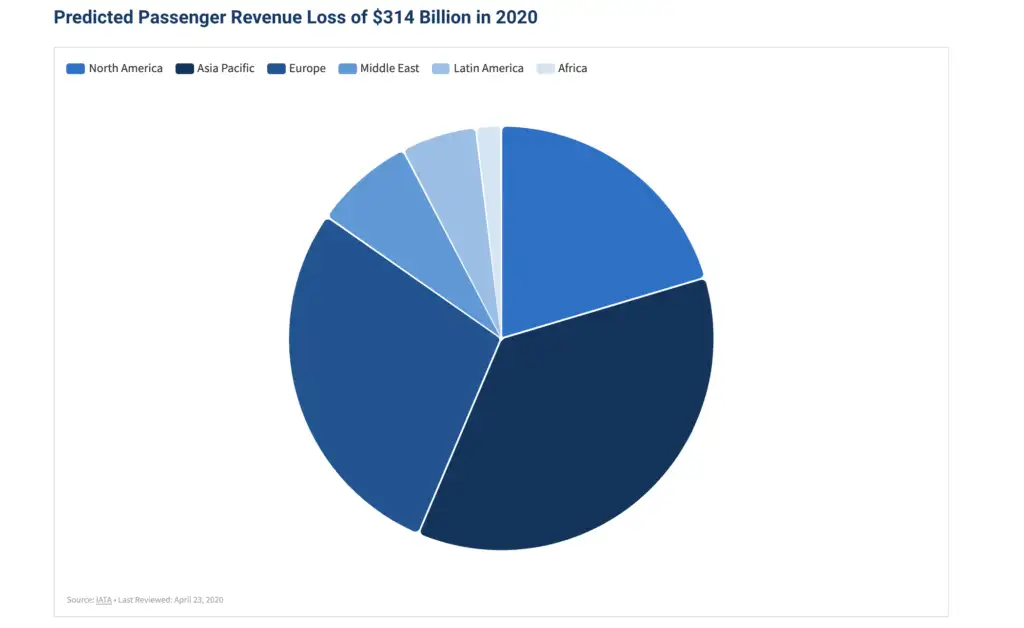
Currently, airlines are offering some very attractive fares, both for the near and long term. Transcon economy round-trips, for example, starting at less than $300 for travel in May; you can (but probably shouldn’t) fly to London for less than $400. But premium-cabin fares are still high.
At present, most airline schedules show minimum service operations through September 30, which is about when U.S. stimulus money is expected to run out. At this time, nobody knows whether conditions will allow airlines to start rebuilding schedules by that time or face widespread closures. For now, most states remain closed or in some state of closures.
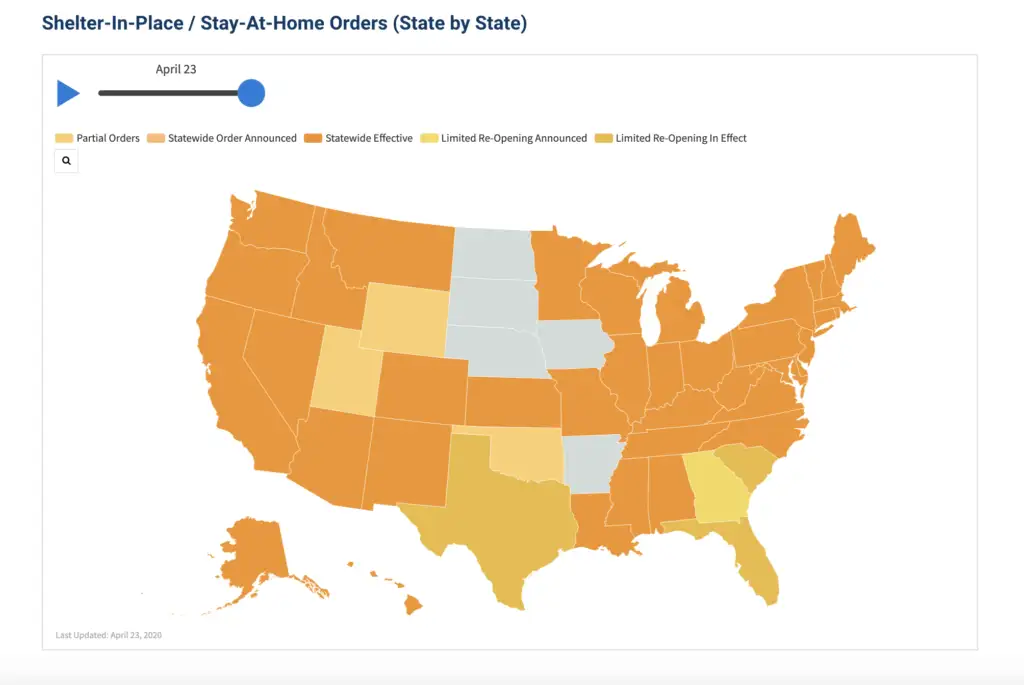
The ancient curse “may you live in interesting times” certainly applies to today’s airlines and travelers alike.
More from SmarterTravel:
- OP-ED: You’re Entitled to a Refund for Any Canceled Flight, Even During a Pandemic
- 14 Booking Sites’ COVID-19 Cancellation Policies
- Travel in the Time of COVID-19: What You Need to Know
Consumer advocate Ed Perkins has been writing about travel for more than three decades. The founding editor of the Consumer Reports Travel Letter, he continues to inform travelers and fight consumer abuse every day at SmarterTravel.
We hand-pick everything we recommend and select items through testing and reviews. Some products are sent to us free of charge with no incentive to offer a favorable review. We offer our unbiased opinions and do not accept compensation to review products. All items are in stock and prices are accurate at the time of publication. If you buy something through our links, we may earn a commission.
Related
Top Fares From
Today's Top Travel Deals
Brought to you by ShermansTravel
France: 8-Night Paris, Avignon & Nice...
Infinity Worldwide Vacations
 vacation
$2880+
vacation
$2880+
Poconos: 3 Nts in Garden of...
ResortsAndLodges.com
 hotel
$305+
hotel
$305+
7-Nt Canada & New England Cruise,...
Princess Cruises
 cruise
$839+
cruise
$839+
